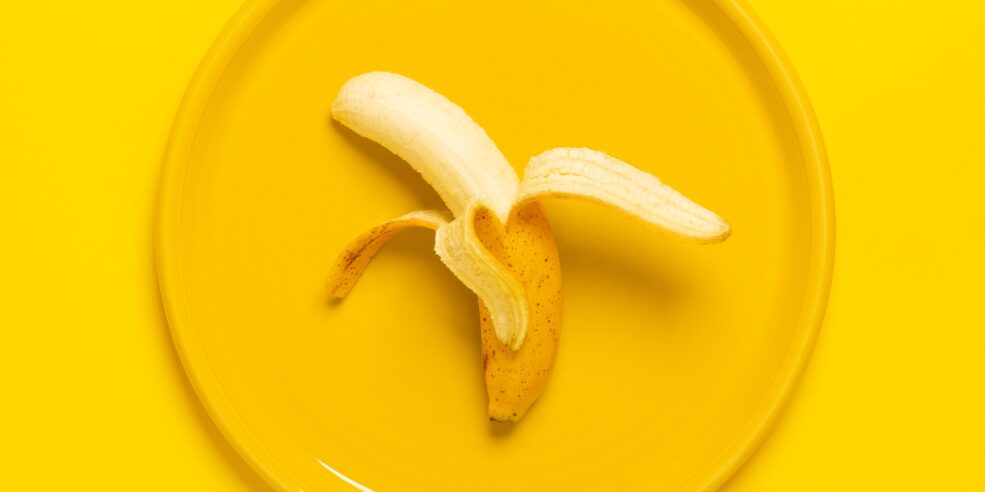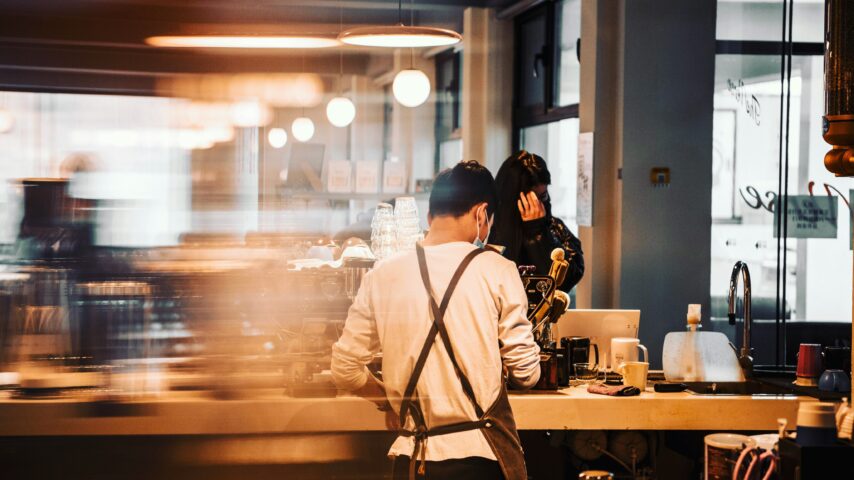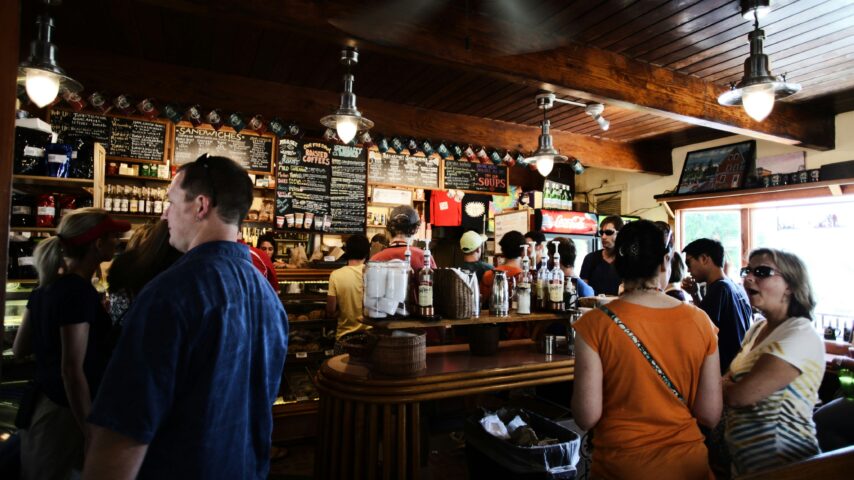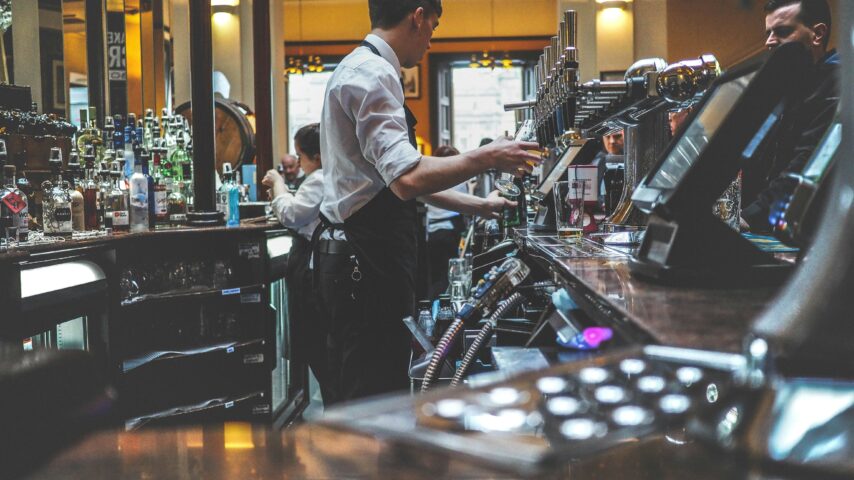So you’ve followed the advice in our ultimate guide to reducing food waste, eliminating waste generated in your kitchen down to the last crumb. But then the time inevitably comes when your plates must fly the nest and set forth into the cruel world of the dining room, where fussy eaters, over-orderers, and people with tiny appetites dwell. If seeing your food return to the kitchen uneaten is breaking your heart, then this guide is for you.
As a follow up to our ultimate guide to reducing food waste in restaurants, we now tackle the specific problem of the food that diners leave uneaten, AKA; plate waste.
As we saw in our previous article, according to a study by WRAP, more than 30% of all food waste in restaurants comes from diners’ plates. This is an enormous amount that can and should be avoided. It’s an incredibly inefficient use of funds, and adds to the enormous impact that food waste has on the environment.
From another perspective, the waste left on plates should go to a much better home than a landfill. 8.4 million people in Britain struggle to afford to eat and a further 40 million go hungry in the United States. We therefore have a serious responsibility to eliminate this unnecessary waste. Fortunately, this guide is here to show you how simple reducing plate waste can be.
Why do diners waste food?
But first, it may be worth exploring why some diners leave food behind. According to a study carried out by WRAP, restaurant patrons are separated into two categories: those who see meals as functional and a means to ‘refuel’ (44%) and those who see meals as a ‘collective treat’, broadly a social occasion (55%). It’s this second group who are more likely to leave food on their plates. Because they see the dining experience as a treat, they are more likely to order more courses and not finish everything.
When it came to not finishing food, 20% of ‘meal leavers’ reported that their reason for not eating everything was due to the portion being too large, and a further 10% claimed that it was due to over-ordering. Interestingly, 11% left food because they perceived it as the social norm to leave a little bit on their plate, to not appear too greedy. This is the type of conception that needs to be changed if we want to fight food wastage.
So what can be done to reduce the amount of food left on plates at the end of a meal?
1) Assess your menu
The easiest place to start is by paying close attention to what comes back into the kitchen. As mentioned in our previous article, keeping tabs on how much plate waste is produced by putting it into a separate bin and weighing it at the end of the week can provide restaurateurs with the extremely valuable knowledge of how much of their food is simply not being eaten.
Some of the work involved in this can be avoided by using Winnow’s smart bins.
Once this data has been collected, it is time to start analysing exactly what food is being wasted. What dishes consistently come back half-eaten? The best way to find out is to ask your wait staff to be more communicative with the customer. When they notice leftover food, it’s important they ask why the food has not been eaten. The key is to approach the customer in a way that encourages them to be honest, such as asking if everything was ok in a concerned manner. Alternatively, providing customers with a survey to fill in that includes gender and age will give you even more information about who is or isn’t finishing their meals. Is it a question of there being too much food provided? Or did the customer simply not enjoy it? Both problems are solvable.
If certain dishes are too large for diners, then it’s a simple question of reducing the amount served – a win-win as there is less waste and the dish itself costs less to bring to the customer. If it is the taste that is putting customers off, then some recipe testing may be in order.
Another useful source of customer feedback that can sometimes provide insights about specific dishes is reviews on Google, TripAdvisor etc. Tenzo shows you all these reviews in one place, and also tracks trends in reviews, allowing you to more easily spot when the feedback is consistent enough to act upon.
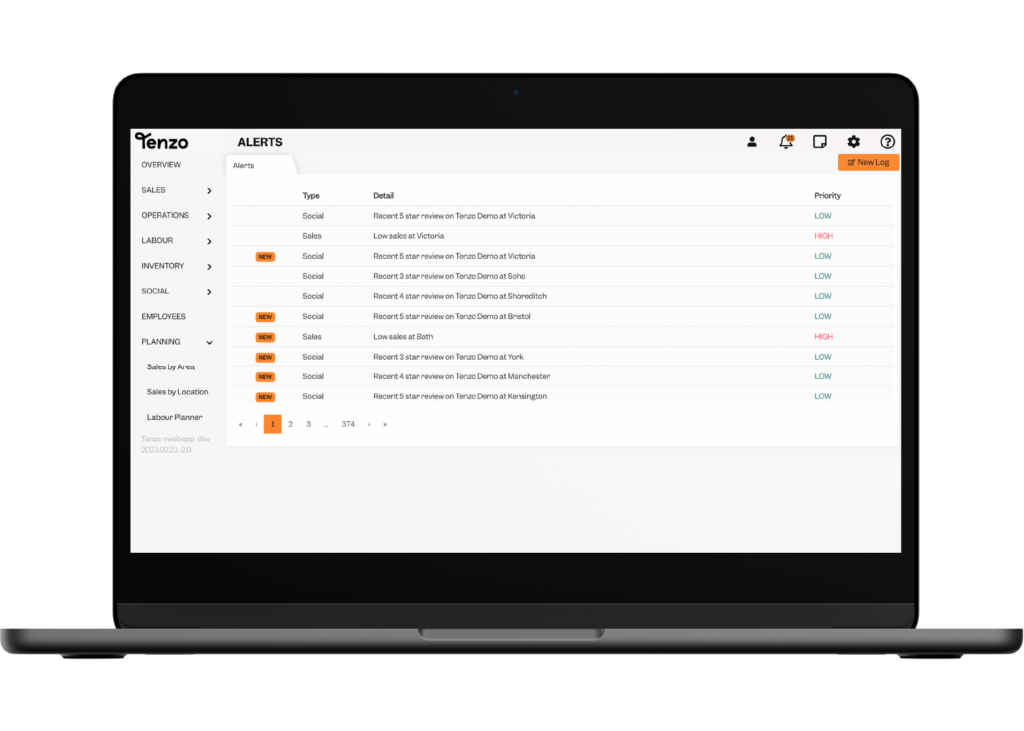
Want to track your reviews in one simple easy-to-use dashboard? Tenzo’s social module is right for you.
2) We all like options
Customers like to have options – we all know this – so why not allow them to decide how much they want to eat? If someone knows that they won’t be able to finish a full portion, then having the option to order a half portion for a reduced price is something that would make your restaurant stand out.
According to WRAP’s research, younger women are far more likely to leave food on their plates (61% of restaurant meal leavers are women), so offering smaller portions could lead to increased sales from the sought-after 18-36 female demographic. We can already see examples of this at restaurants such as Pizza Express, whose Leggera Pizzas (basically just pizzas with a big hole in the middle) have made a virtue of a smaller portion.
Furthermore, while most restaurants do have a children’s menu, it is worth noting that a two year old and a ten year old eat very different amounts. Giving toddlers less on their plates may also reduce the amount that ends up on the floor!
But it’s not only children who may require smaller portions. Elderly customers may find that having a reduced portion size means being able to finish their meal, but may like to have more sophisticated items than the burgers and nuggets on the children’s menu. Having the option to have anything off the menu in a reduced portion may improve the experience for older patrons. This also has hidden benefits. In 2015 the UK hospitality sector lost over £16 billion in potential revenue by ignoring older generations, so by catering to their needs you open a whole new revenue stream for your restaurant.
3) Doggy bags are the future
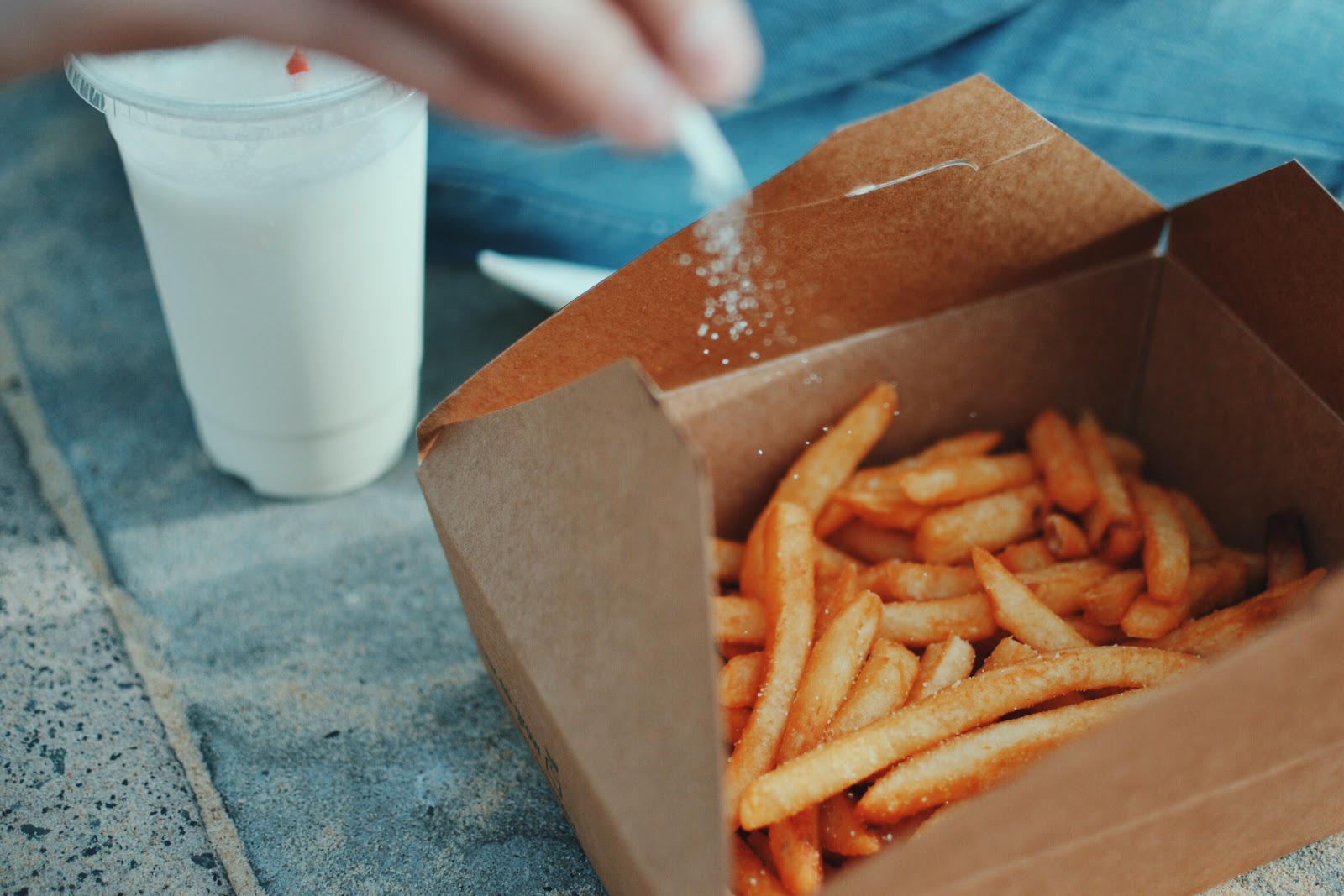
The US already has a strong culture of taking home leftovers from a restaurant, however this is less the case in the UK. For years there has been a slight but persistent stigma surrounding the notion of taking home whatever is left over, and some people are embarrassed to ask for a doggy bag.
In fact, 40% of diners in the UK are too nervous to ask for a doggy bag. However, even in the US, 55% of plate waste is not taken home and of the food that is, 38% is never eaten. If we are going to tackle the enormous food waste problem the stigma needs to change and it will be partly up to restaurateurs to encourage a doggy bag culture. Servers should be trained to ask if customers wish to take what is left on their plates home instead of putting the pressure on the diner to ask for themselves.
Another possibility is giving their doggy bag to someone in need. With homeless populations on the rise, hot food may be more appreciated than one would think. This idea could be casually suggested by wait staff when a wasteful customer doesn’t want a doggy bag for a considerable amount of leftover food.
In the UK, England can take inspiration from Scotland: their Good to Go campaign encourages restaurants to provide boxes so customers can take their leftovers home. They have seen that offering a bag to customers after their meal reduces plate waste by 42%. Their goal is to reduce total food waste by 33% by 2025.
Doggy bags may be the way forward for reducing food waste, but don’t forget about the environmental impact that all those plastic takeaway boxes have! Biopac are just one company creating boxes made from sustainable wood pulp and coated with a leak-proof compostable material.
4) Optical illusions

In the United States, we have seen the average portion size more than quadruple in the last fifty years. This means that portions sizes can now be eight times larger than what the USDA considers a standard serving size. Diners have now come to expect quantity as well as quality when dining out. A lot of this food can go to waste once they realise their eyes are indeed larger than their stomachs.
Fortunately, restaurateurs may be able to use a few optical tricks to give the illusion of heaping quantities of food while actually only serving what is going to be eaten. Here are a few options:

- Serve food on smaller plates or in shallower bowls: this may seem extremely obvious but human perception is something that can be played with. This is due to the Delboeuf illusion where identical circles will appear larger if surrounded by a small ring (as in a small dinner plate) and smaller if surrounded by a large ring (as in a large dinner plate). Plus it’s been shown that swapping a 24cm plate for a 21cm one can reduce food waste by 20%.
- Matching your plates to your tablecloth can also help with perspective, also due to the Delboeuf illusion where the continuation in colour stops us focusing on the size of the ring.
- Consider the colour of the crockery that food is served on. A portion served on a plate that contrasts in colour to the food is seen as larger as the contrasting colour allows you to focus on the food for itself. Moreover, it has been shown that people are likely to feel like they need less food if it is served on a red plate.
- Presentation can also trick the eye into seeing more than what is there. Foods shaped into a square appear larger than their circular equivalents. This can also be the case with placement on the plate: food placed slightly further apart can fill much more space on the plate without needing to increase portion size.
- Size of cutlery can even make a difference – one study showed that people eat less when presented with a bigger fork. Not to say that your diners should go hungry, but this tip could help with the realisation that they do not need to attempt to eat the massive portions that they are usually presented with.
- Finally, music can have a huge effect on how we eat. Matching your music to the food you are serving can increase diners’ enjoyment. Furthermore, a steady rhythm affects how quickly or slowly someone eats. To make your diners savour your food, a slower tempo may be more appropriate. One caveat though – don’t make your music too loud! A study has shown that eating with loud noise in the background can actually diminish the flavour of the food.
5) No need to make assumptions
Making the assumption that a customer expects a particular dining experience may be causing unnecessary waste. More formal establishments, for example, may assume that their customers expect a bread basket to be set on the table. However, more often than not, not all of it is eaten. The leftover rolls then have to be thrown away. Much of this waste could be avoided simply by asking the customer if they would like bread and serving single servings at a time.
The same can be said for sides. The most wasted sides are bread, chips and coleslaw. So giving diners the option to have a side in the first place or giving alternative sides for diners who may wish to have salad instead of chips, for example, could go a long way to reducing plate waste. Plate waste is low at fast food chains and this may be due to the fact that consumers are able to make their own choices when it comes to size and quantity. This is perhaps something that should be seen in more traditional restaurants as well.
Clarity is also key. Menus should be explicit when a portion is on the large side. Take steaks, for example. Though their size is usually listed in ounces, this might not be not an intuitive measurement for most people. Using descriptive words such as ‘enormous’ to indicate portion size may be more helpful.
6) Get your staff on side!
Explaining your aim to reduce plate waste to your staff can have a big impact on the amount of waste generated. Once they’re on board with the aim, staff can do a lot individually to create the conditions for less wasteful behaviour.
Front-of-house staff can be encouraged to up-sell drinks and lighter sides rather than larger mains, discouraging over-ordering while maintaining spend-per-head.
Furthermore, servers need to be well-versed on the entire menu and able to explain every dish in detail so that customers know exactly what to expect when their dishes arrive. Keeping customers well-informed makes sure they will order something they will enjoy (and finish). Waiters can also advise proactively on the amount of food ordered, whether it’s likely to be too much to finish.
When it comes to back of house, the fast food industry may again be the one to copy. In standardising measurements across all dishes they are sure to never over-portion, cutting back on unnecessary waste and saving money. Encouraging the use of scales or measuring cups and spoons when plating allows a restaurateur to know exactly how much needs to be served to the customer for the perfect-sized portion as well as exactly how much the dish is costing them.
Conclusion
There are plenty of ways of reducing plate waste without affecting the dining experience. However, perhaps the most effective method will be changing current outlooks and expectations. Some diners have come to expect overly large portions when they go out to eat simply as a sign of opulence. This is going to have to change if we have any chance of reducing the food waste epidemic that is plaguing the industry.
Additionally, more must be done to make consumers aware of the waste they generate. Many diners don’t give the food left on their plate a second thought once it is taken away, but a small nudge towards thinking about where that food ends up may make a world of difference. Even a small reminder at the bottom of the menu about ordering a reduced portion size or asking for a doggy bag to prevent unnecessary waste could go a long way in changing customers’ attitudes and behaviours.
Tenzo tip:This is something that we all need to be thinking about and the faster we can reduce waste the better. Of course, plate waste is just a part of the larger problem of food waste. An essential part of combating the problem will be accurate forecasting so that you know how much food to order. This is where Tenzo can help you. By collecting your data, Tenzo enables you to forecast the level of demand for your store, saving time, reducing waste and optimising your menu. |
